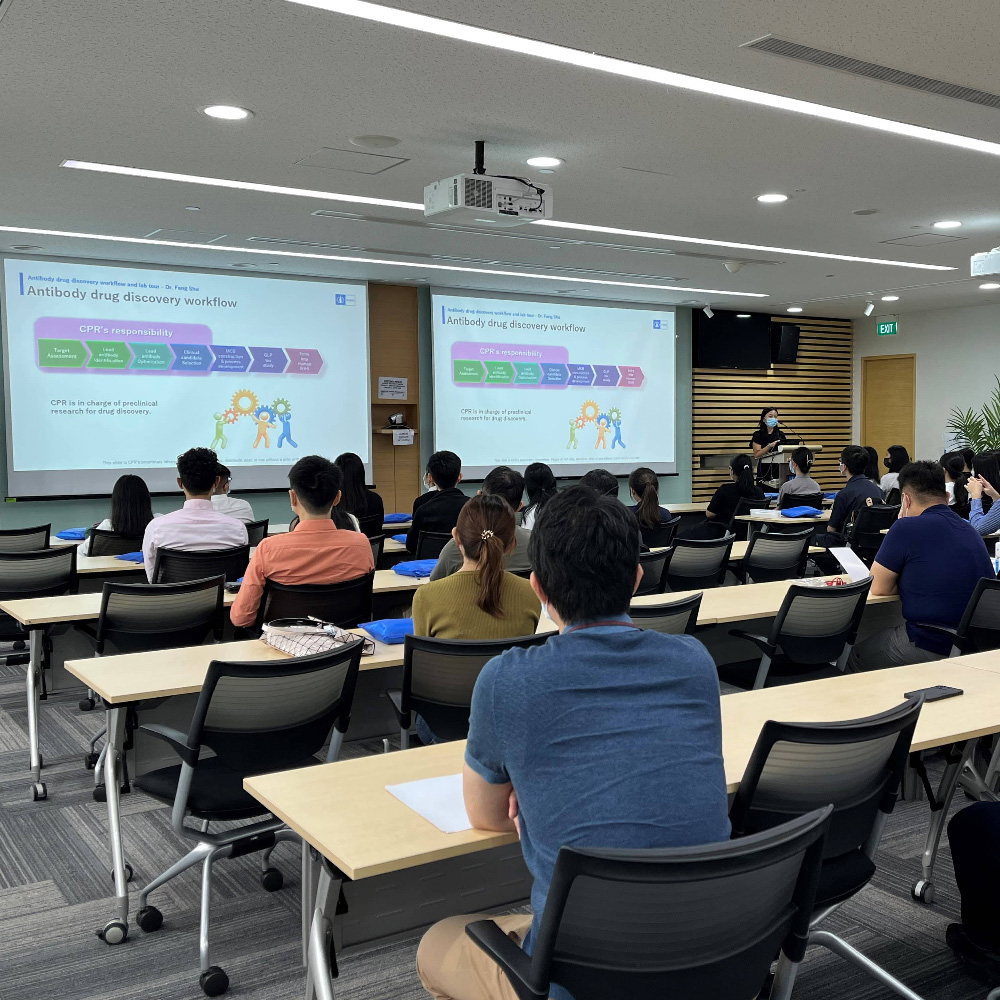On 19 October 2022, CPR conducted a virtual presentation to students pursuing a Master of Science in Biotechnology (Coursework) degree from the National University of Singapore’s Department of Biological Sciences.
The talk was organised as part of industry sharing to provide students with the opportunity to build industry connections and gain real-world insights into the field of biotechnology.
In his presentation, CPR CEO Hideaki Shimada shared more about how CPR is leveraging its proprietary technologies to discover promising drug candidates in a shorter amount of time. Explaining the process of drug discovery, he highlighted how monoclonal antibody drugs have the potential to address numerous diseases.
He also pointed out how Singapore’s science ecosystem has been instrumental in helping CPR to drive R&D to create novel therapeutic antibodies. The vibrant R&D scene in Singapore has led to public-private collaboration possibilities and has also attracted promising R&D talent from all over the world.
Overall, the industry exposure from the talk provided participants with fresh perspectives on how their post-graduate degree could lead to various career pathways in the field of biomedical sciences.




